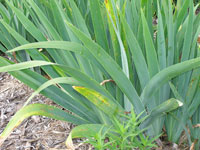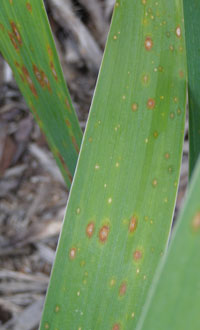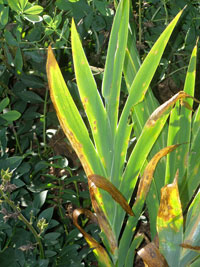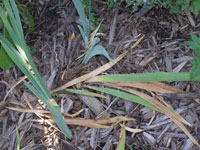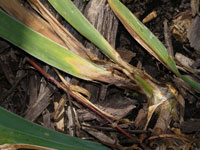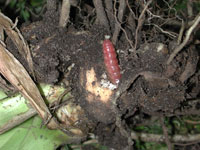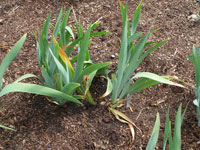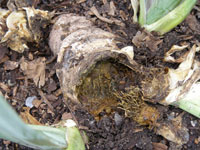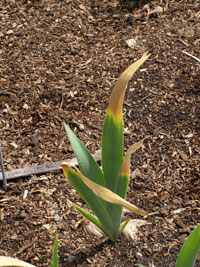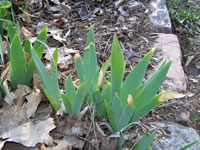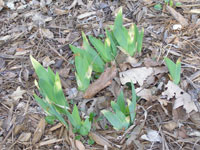Extension > Garden > Diagnose a problem > What's wrong with my plant? > Annuals and Perennials > Iris > Spots on leaves
Iris > Spots on leaves
1 of 4
Iris Leaf Spot
Didymellina macrospora
- Light yellow to tan spots with a light colored center, about 1/4 inch across
- Tiny black dots are often visible in the light colored center of the leaf spot
- Leaf tissue around spots may turn yellow or brown
- In severe cases, leaf tips turn brown and bend downward
- More information on Iris Leaf Spot
2 of 4
Iris Borer
- Damaged rhizomes occur mid summer through fall
- Water-soaked looking streaks in leaves may be noticed in spring
- Yellow or brown streaks especially near the base of the leaf mid to late summer
- Ragged brown leaf tissue at the base of the leaf, may look tattered or have sawdust like frass
- Pinkish or whitish larva with a dark colored head, up to 1 1/2 to 2 inches long inside rhizome
- More information on Iris Borer
3 of 4
Bacterial Soft Rot
Erwinia carotovora
- Leaves turn brown from the tip down with a yellow border between green and brown leaf tissue
- Browning leaves may wilt and fall over
- Rhizome is soft when pressed on and may smell bad
- Inside of the rhizome is soft, mushy and smells bad
- Common in heavy wet soils, and in rhizomes damaged by borer
4 of 4
Freezing injury
- Yellow to tan leaf tips of large spots on leaves
- Affected leaf tissue turns papery thin and dry
- Symptoms show up over night
- Occurs early spring with a late frost
- After cold period, new growth is healthy and normal looking



